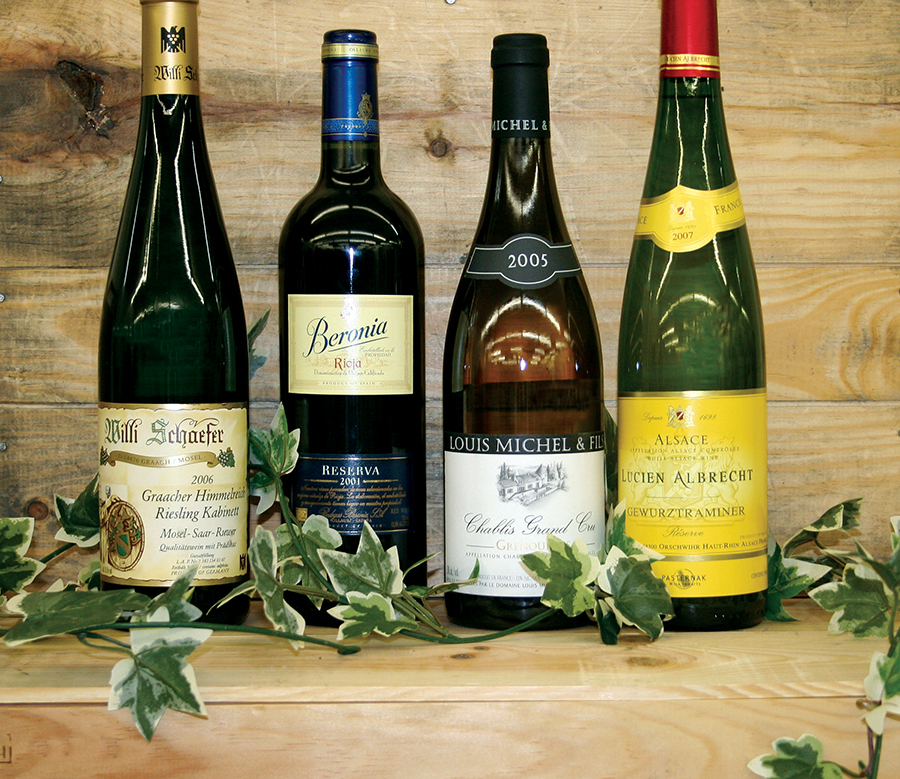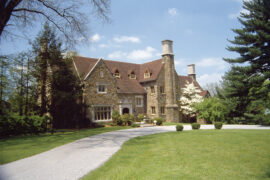By Matthew DeBord
HQ 67 | WINTER/SPRING 2009
You can’t really pick up a wine magazine, a food magazine, a newspaper with food and wine coverage, or visit a wine website without getting advice about “recession” wines or “wines for tough times.”
The upshot of these recommendations tend to be cheap and accessible wines that can replace the more expensive wines you might have grown accustomed to drinking. So instead of California Cabernet Sauvignon, try Argentine Malbec. In place of California Chardonnay, look for California Viognier. If you can no longer swing expensive Pinot Noir, how about Barberas from Italy? Lacking funds for Champagne? Well, there’s always Spanish Cava.
Worse, you’ll often be directed to simply drink a cheaper version of the same thing. A $10 Chardonnay instead of a $30 or $40 one.
In some instances, this is a sound strategy. But of course what it really means is that you’re settling for a substitute wine. A better strategy, in my opinion, is to use budget-cutting as an opportunity to explore wines that are – get ready for it – just as good as the possibly overpriced wines you were enjoying before. Let’s face it, wine is subject to the same basic laws of supply and demand as everything else. In years past, a surging economy allowed lots of people to buy up all the pricey wines they wanted, thereby bidding up prices. Those wines will inevitably become less expensive over the next few years as demand flags, but they may never fall back to the point where they become truly affordable to the consumer.
Which is why you need to get acquainted with the quality-price ratio, or QPR. QPR is how you survive as a wine lover during periods of belt tightening. Because QPR allows you to have a very respectable Plan B, as opposed to retreating to the consumption of cheap rotgut or plonk.
Wines that have a high QPR are almost always from slightly obscure or out-of-favor regions. The best place for great QPR is currently Germany. Very few people drink German wine anymore, outside of the land of Wagner. Mainly, this is due to the German wine industry producing almost no red wine for export. Red wine is where it’s at internationally, hence the high prices commanded by fine Bordeaux from France, as well as the low prices offered by Australian winemakers who export semi-premium bulk wines, like Yellow Tail.
Germany doesn’t do reds. Germany does whites. Decades ago, they were well known to wine aficionados. These days, however, they’ve become a niche affection, drowned out in the global marketplace by wines from France, Spain, Australia, Italy, and even New Zealand and South Africa. A typical American wine shop or grocery store may carry half a dozen German bottlings, sometimes more, but this selection will rarely be competitive with the usual reds and whites from California and elsewhere. German wines also tend to be on the sweet side. This was terrific 30 years ago, when people liked sweet wines more. But nowadays, dry is the name of the game. All of which is distorting, because German wines, especially Rieslings, are of astonishing quality. And due to years of neglect, massively underpriced. On a quality continuum, a decent German Riesling at around $25 easily gives a California Chardonnay costing three times that a run for its money. And often enough, outruns it.
A knock on German wines has always been that the labels are completely incomprehensible. Sometimes, this is true. But because most premium Riesling is exported by respectable producers, it doesn’t really matter what the label says. All you need to learn is that a Riesling from the Mosel region will tend to be more dry (or less sweet, depending on how you look at it) than a wine from, say, Pflaz. Both will be almost hypnotically complex, and both have the potential to age for years, due to their relatively high acid levels. Oh, and one other thing: Rieslings usually have lower alcohol levels than other whites, so they go down easier and are less likely to overpower food.
Two other wines that offer high QPRs are Gewurztraminers from the Alsace region of France and Chablis from the Chablis region of France. Gewurztraminer is its own grape, whereas Chablis is made from Chardonnay. “Gewurzes,” as the Alsatian wines are often called, are extremely fragrant and spicy whites that are lots of fun to drink right away and can pair up beautifully will all kinds of different foods. The best ones rarely exceed $50.
Chablis, like Riesling, got a bad rap in the United States because the name was liberally applied to blended white wines that had nothing to do with France. A good Chablis, from France, is a sleek, acidic white wine that can age for decades, taking on all sorts of exotic flavors and textures along the way. There are only about half a dozen notable producers (most of whom you can find online, so don’t worry about the wines being so rare that they can’t be tracked down). Some wine writers think that Chablis, in fact, is the highest expression of the Chardonnay grape, not Burgundy, which neighbors the Chablis region. Again, the prices tend to be much lower than comparable fine wines. QPR is high. Oakiness — those toasty flavors that come from time in new oak barrels — is low because Chablis is generally aged either in old oak barrels or in simple stainless-steel tanks. Dauvissant and Raveneau are a pair of top wine producers to look for.
QPR, unfortunately, isn’t a concept that can be applied without some knowledge. In other words, you have to do your research, and of course engage in a certain amount of trial and error. For example, you might not ultimately like Gewurztraminer all that much (your loss!). But you might thoroughly groove on Mosel Rieslings (lucky you!). This is where resources such as Wine Spectator and Wine & Spirits magazine can come in handy (as well as their websites): they both feature regular reports on the worlds overlooked wine regions, and can steer consumers in the right direction.
One final high QPR region to check out is Spain. It’s not as focused as the others I’ve mentioned, because it produces a wide range of reds and whites. But it’s really the only winemaking nation that can substitute wholesale for a region like California, and serve up that wonderful QPR. So give it a try. What have you got to lose? Nothing, really, and everything to save. So get your QPR on. I don’t think you’ll be disappointed.





